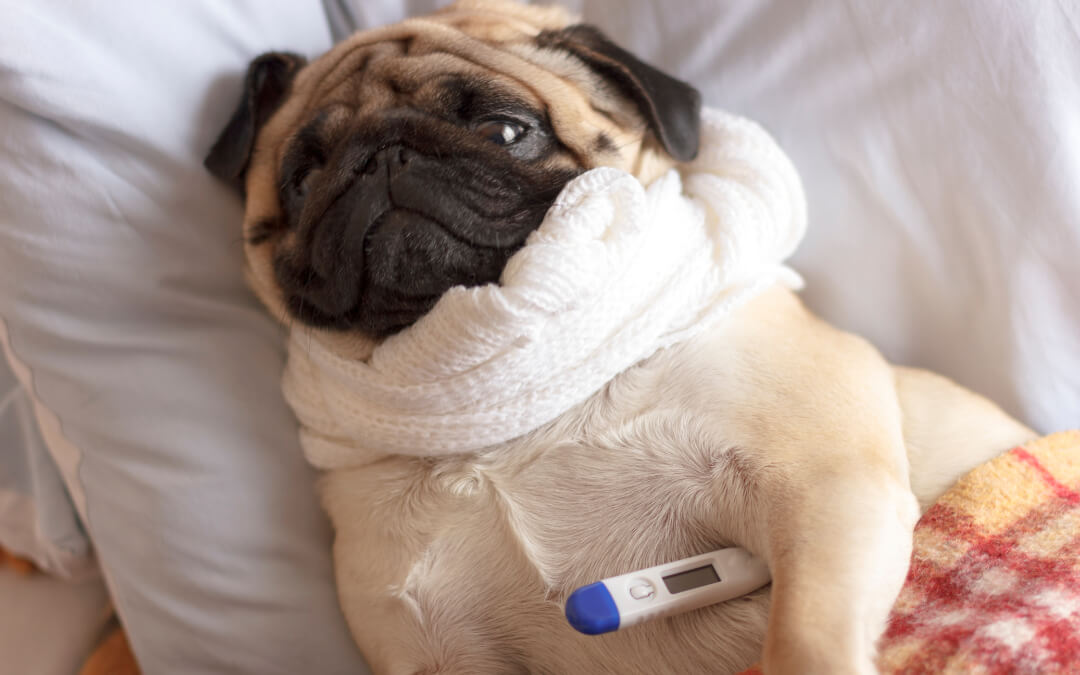When you welcome a pet into your home, they instantly become an important part of your family. However, unlike people, they are someone who cannot express their pain or discomfort. And this is one of the biggest challenges pet owners face, as many of us often struggle to recognize when our pets are not feeling well.
They rely on us to notice the small changes in their habits and health, and identifying anything wrong early can make a huge difference. If you’re ever unsure or notice severe symptoms, contacting an emergency vet in San Antonio can give your pet the immediate care they need.
Remember, a fever often means your pet’s body is trying to fight off an infection or illness. And when you spot the pet fever symptoms sooner, it helps protect their health and makes it easier for your veterinarian to assist. Learning the right signs and knowing what to do next sets you up as a responsible and caring pet owner.
What is a Fever in Pets?
A fever is when an animal’s body temperature rises above its normal limit. This usually points to the body’s effort to fight off something like an infection, inflammation, or disease.
- Normal temperature for dogs: 101 to 102.5°F (38.3 to 39.2°C)
- Normal temperature for cats: 100.4 to 102.5°F (38 to 39.2°C)
A fever in pets is a sign, not a cause. It does not tell you what is wrong, just that something is not right. Not all sick animals show a high temperature, and you cannot always tell by feeling their head or body. A reliable thermometer is the surest way to check, but knowing the main pet fever symptoms helps you decide when to take action.
Common Pet Fever Symptoms to Watch For
You won’t always see a big change in your pet right away. The signs of fever in pets often look like other health problems, making them easy to miss. Even so, some classic warning signs should catch your attention. Look for these fever symptoms if your pet seems off.
Changes in Behavior and Activity
Pets are creatures of habit. When they are not feeling well, their regular activities start to change.
- Lethargy: Your pet might move less or sleep more than usual.
- Less playful: A usually lively dog may lose interest in toys or walks. Cats might skip their daily zoomies or hunting games.
- Avoiding warmth: Some pets will look for cool tile floors or shady spots to lie down, seeking relief.
Cats often hide more, while dogs may seem clingy or listless. You know your pet best, so pay close attention when their energy level shifts.
Physical Symptoms
Physical signs give you more clues. They often show up along with changes in mood or activity. Common fever symptoms in your pet to watch for include-
- Warm ears, nose, or paws: Touching your pet might reveal that these spots feel hotter than usual.
- Shivering or trembling: Just like people, pets may shiver with a fever even when the room is warm.
- Loss of appetite: Turning away from regular meals, treats, or water is an early warning sign.
- Panting or rapid breathing: Faster breathing or panting when it is not hot out can mean a problem.
- Coughing or sneezing: This can point to a respiratory infection.
- Nasal or eye discharge: A runny nose or eyes may appear with a fever.
While these symptoms are common with many illnesses, a combination or sudden onset, especially with other changes, should be taken seriously. If your pet cannot get comfortable, is breathing hard, or won’t eat or drink at all, prompt attention is needed.
Checking Your Pet’s Temperature Safely
Owners often want a quick answer: can you tell if your pet has a fever by touch alone? The honest answer is no. To be certain, you will need to use a thermometer. Always use one built for pets. Here is how-
- Choose the Right Thermometer: Digital rectal thermometers are most accurate for dogs and cats.
- Gather Supplies: Pet-safe digital thermometer, lubricant (like water-based jelly), gloves, and a helper.
- Stay Calm: Let your pet know you are there to help and use a soothing voice.
- Insert Gently: Lift the tail and gently insert the thermometer slightly into the rectum (about 1 inch for cats and small dogs, a bit more for large dogs).
- Wait for the Beep: Most digital thermometers give a signal when ready.
- Remove and Clean: Write down the temperature, clean the thermometer, and reward your pet.
Normal dog and cat temperatures run higher than those of humans. Do not worry unless the reading is above the normal range listed earlier.
If your pet is anxious, aggressive, or you are unsure, it is safer to have your vet handle the check.
Normal Temperature Table (Quick Reference)
| Pet Type | Normal Temperature (°F) | Normal Temperature (°C) |
| Dog | 101.0 – 102.5 | 38.3 – 39.2 |
| Cat | 100.4 – 102.5 | 38.0 – 39.2 |
When to Call the Vet and What to Expect

Not every fever calls for an emergency visit. Still, the risks rise fast if your pet shows these warning signs along with a high temperature-
- Unable or unwilling to stand
- Seizures or muscle twitching
- Gums that are pale, blue, or bright red
- Severe vomiting or diarrhea
- Difficulty breathing
- Not eating or drinking for more than 24 hours
If you see any of these, call your veterinarian right away. Never give human medications such as acetaminophen or ibuprofen, as these can be toxic to pets.
When you call, the vet will likely ask-
- How high is the temperature?
- How long have symptoms lasted?
- Any recent injuries, exposures, or changes in diet or routine?
- Is your pet up to date on vaccines?
The vet may suggest you bring your pet in for a full check-up. This often includes a physical exam, blood tests, urine tests, or X-rays. Sometimes, the cause is easy to see, such as a wound or infected tooth. Other times, more testing is needed. Treatment depends on the cause but may include fluids, antibiotics, or other care to help your pet recover.
The Bottom Line
Pets depend on us to notice when they need help. By understanding the symptoms of pet fever and recognizing the signs of fever, you can respond quickly. Watching for changes in activity, appetite, and overall behavior keeps your pet safe. Checking their temperature at home is possible, but always call your vet with any questions or if the fever comes with serious symptoms. Acting early increases the chances of a quick recovery and keeps your furry friend healthy and happy. Always trust your instincts; your prompt care makes all the difference.
If you need urgent care after hours, you can Contact Night Watch Elite Animal Emergency or call at 210-455-4559 for immediate assistance.

